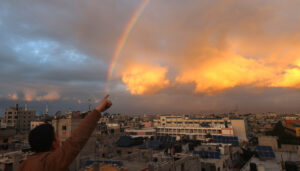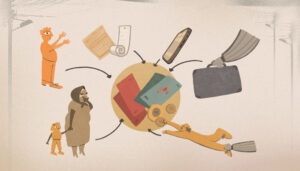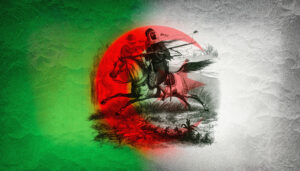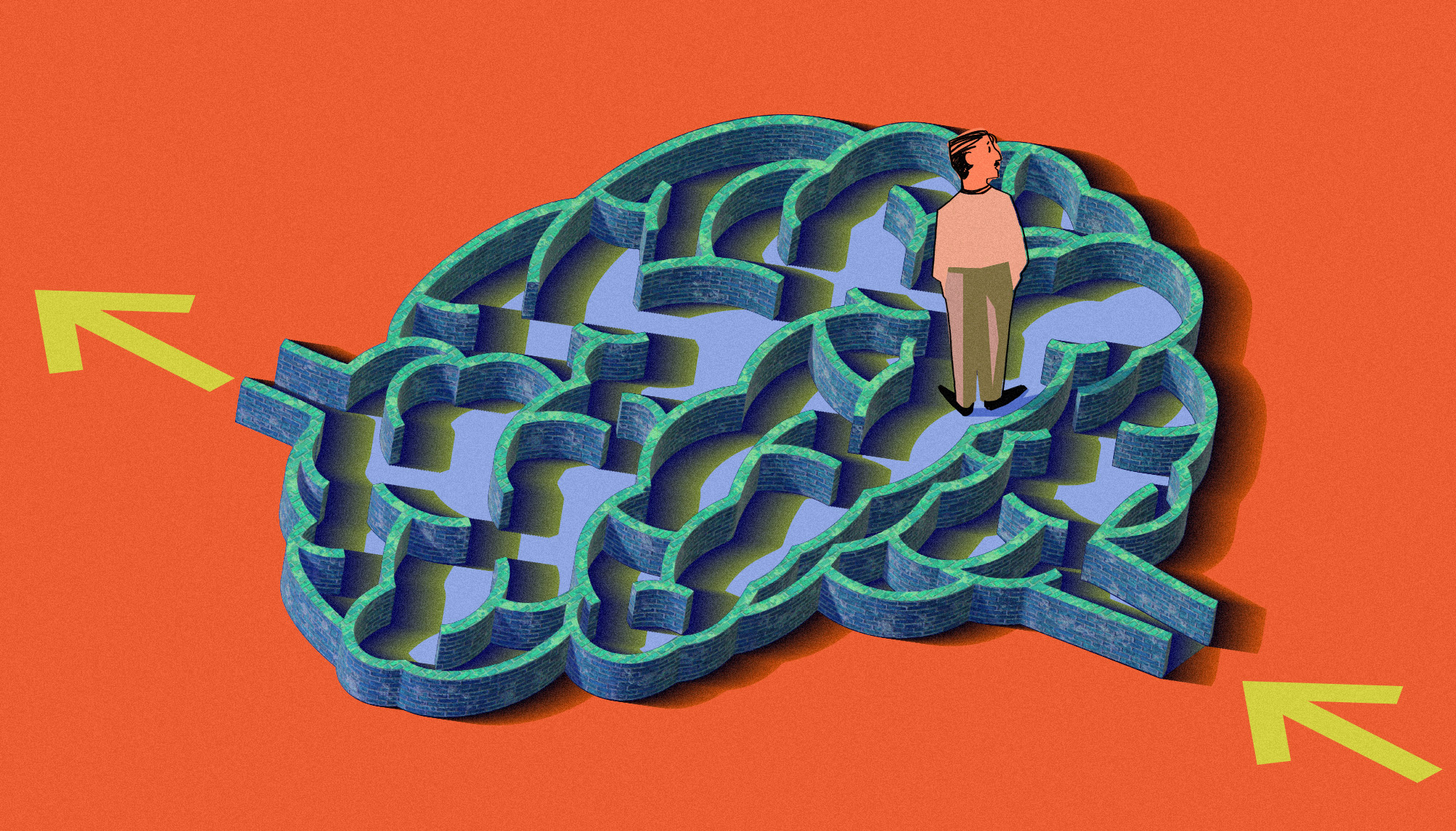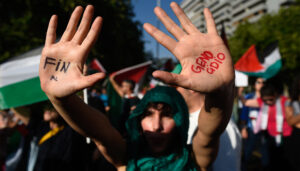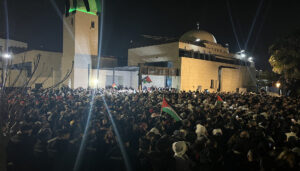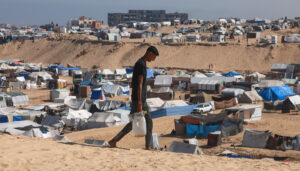Remnants of ancient past pave way for global future
Written by Rami Abdelrahman
The Nabateans of Petra took over the Kingdom of Edom to establish a pioneering civilization that collected art and culture from surrounding kingdoms, but little did they knew that the same land would emerge into 21st century Jordan, home to an ethnically diverse society.
While we consider globalization a term that best describes what is happening today in terms of the movement of people and knowledge around the world, it was a normal daily practice back in ancient kingdoms like Petra, only ‘global’ citizens were a lot less in number and the process comprised of physical movement — nothing virtual back then.
Petra is believed to have had equal rules for all members of their society, for men and women, derived from their pagan religions which gave equal power to male and female deities. Moreover, the Nabateans welcomed other cultures into their kingdom, as they did trade with the Jews of former-Judea, Amman’s Ammonites, the Assyrians of Damascus, the Babylonians of Iraq, and the tribal kingdoms of the Arab peninsula.

Their Aramic language was affected by Arab tribes, and later as their goddess Al Lat was replaced by Greece’s Athena, Rome’s Minerva, their kingdom failed in the face of the new colonials – to be replaced by beacons of democracy in Amman, Jerash, and Umm Qais, before the single God of Christianity and later Islam put an end to a long history of paganism. Jordan then became a crossing point for Europeans as they explored the land of who they referred to as ‘Bar-bar’ – the peoples of Persia and beyond.
Islam came and forced a new rule over the land of Jordan, putting an end to European democracy and Nabatean equality by enforcing the Islamic Shriah law on the land – taxing non-Muslims with a Jezyah, and setting specific roles for men and women in society.
Jordan’s ancient kingdoms dissipated into the shadows of an Islamic Empire, but the land of Jordan soon reclaimed its status as its southern desert that gave birth to the Abbasid Islamic Kingdom, and shelter to their rivals in the north, the Umayyads. Later, Jordan offered the Kurdish army general Salaheddin Al Ayoubi, a base from which he drove the crusaders out of the region, which was taken over by the Mongols and Tatars of Central Asia – until the Turks established an ever failing Ottoman Empire, which end was devised by a coalition of Saudis, Jordanian tribes and the British during World War I – giving birth to the Hashemite Kingdom of Jordan as we know it today.
The land tells the stories loud and clear: Petra’s alleys are left today to tourists and Nobel prize winners to marvel, while Ma’an, which birthed the Abbasids and gave the Hashemites a well-deserved welcome, is home to a curbed Islamic opposition and an impoverished homogenous Bedouin society living under the shadow of jet fighters departing from a nearby army airfield in Jaffar, as they wait for development projects to secure their basic needs.
Most other old Jordanian cities such as Jerash and Madaba dwindle into a dire need of basic provisions as well, but that’s not the case with the center of Jordan’s development, Amman, as it gives jobs to the rest of the country, and a space for a growing international community to satisfy its local and regional needs.
Amman today is home to peoples hailing from the modern kingdoms that replaced the old ones, Palestinians, Syrians and Iraqis, finding refuge side by side with Caucasian Muslims and Druze, naturally integrating in the Jordanian society without any integration policies and enriching Jordan’s culture and opening channels of economic opportunity.

Meanwhile, hundreds of farther nationalities find Jordan a safe place to serve their families at home: Americans minding their business in a troubled but oil-rich strategic region, Chinese, Indians and Egyptians seeking low-wage jobs to save many families from hunger, Arabs from the Gulf and Saudi Arabia redirecting their oil gains into sky-scraper and development projects, Israelis finding a platform to discuss peace with the rest of Arabs on a rather neutral soil.
The texture of Jordanian culture has never been so diverse as it is in Amman today, which is reflected in the many accents heard in its streets, as more-to-the-point English weaves its words into poetic Arabic texture, otherwise spoken in hard accents such as the Jordanian or the Iraqi, or in softer accents such as the Palestinian or Syrian.
However, not all peoples stand a chance of becoming Jordanian unless it is a foreign woman receiving Jordanian citizenship by marrying Jordanian man, while Jordanian women does not share the privilege of passing citizenship to spouses or children – unlike in Nabatean days. This might prompt in the future a need to reassess current laws, as Jordan becomes less homogenous and more international, due to a growing need for manpower, expertise and capital.
Meanwhile, the well-educated Jordanians have been seeking refuge abroad for a pay equal to their intellectual input, marrying and exchanging nationalities with mostly with Europeans, North Americans, and other Arabs and occasionally with Asians, Africans and Latin Americans, and creating cultural and social linkages with home, feeding into the globalization of the Jordanian society from abroad.
This has so far prompted politicians in Jordan, and the world per-se, to try to control globalization in the direction of certain cultural and market influences against others, depending on where they stand on the political spectrum and what political ideologies they embrace. With liberal market policies and a right to center political ideology, Jordan has been opening its doors to capitalism.

The future prospects for the ‘globalization’ of Jordanian culture are quite vague at this point, Jordanians might need to look into the social texture again, whether they want their country to continue this pace of quick globalization by liberalizing rules of social conduct, allowing an international society to prosper, or otherwise bare the consequences of a possible civilization clash between open market rules and restrictive social laws, inherited from obsolete, and sometimes ridiculous, tribal conducts, (i.e. male dominance, reduced sentences for ‘honor killers’, ..etc).
Living in a region that could drift any moment into a mass conflict which could destroy it the way the Nabateans were wiped off the face of the Jordanian desert, it is commendable that Jordan is leading its way into becoming a multi-cultural society, ever becoming more diverse under a much-hoped for and far-fetched peace in the Middle East. However, the security issue can be a tricky one, and should definitely be open to public debate to engage all Jordanians and to avoid hampering development as in further restricting free expression and political modernity. Engaging the grassroots as the highest levels is now more important than ever, in light of regional circumstances and local developments.
However, extreme ‘nationalists’ and sectarian Islamists are arguing against diversity, saying that it brings more trouble and more competition over opportunities that are open to Jordanians, while the majority of Jordanians, which seem quite apathetic to these ideologies, survey after survey, seem to be taking two steps forward and one step back towards integrating with these rapid developments.
However, most believe that diversity has brought new economic opportunities, ideas, and connected Jordanians more with an inter-dependent world.

